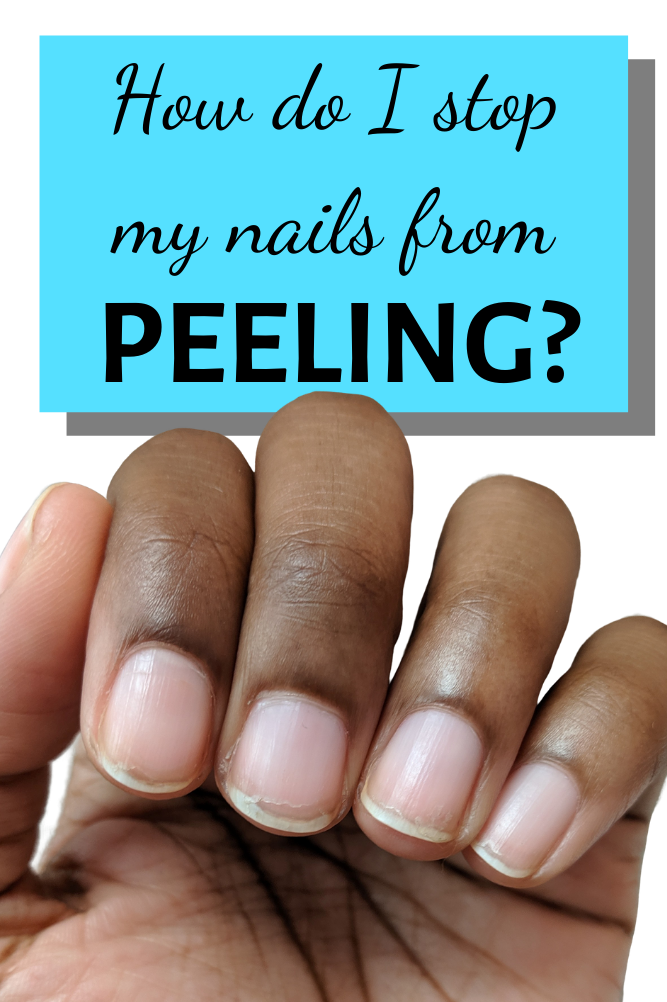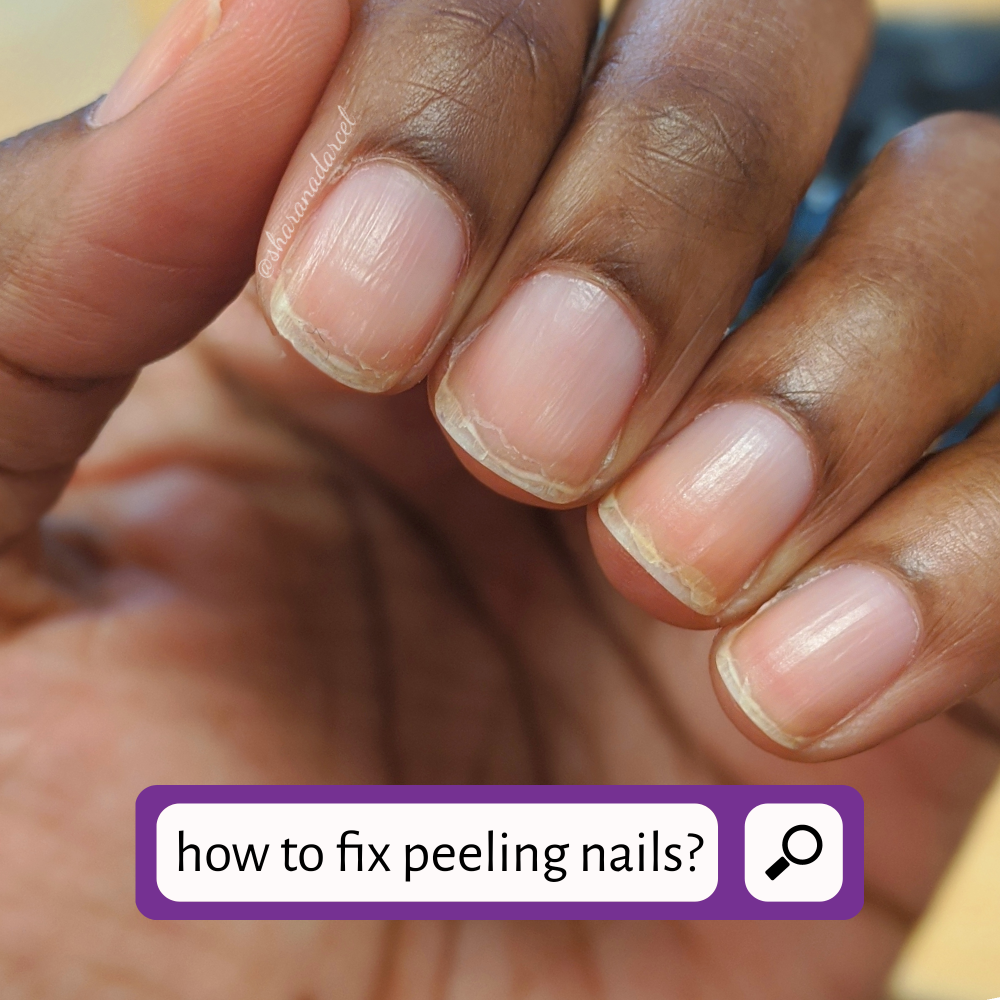Peeling nails are a big issue for a lot of people. When the layers of your nails peel apart, it can lead to weakened nails and unintended texture on your manicures. Keep reading to learn why this happens and how to prevent it!
Some of the links in this post are affiliate & referral links. If you use them to make a purchase, I will earn a commission at no additional cost to you.
WHY ARE MY NAILS PEELING?
Your nails are made up of multiple layers of keratin, the same thing your hair is made of. It’s pretty easy for water and other liquids to get between those layers, which then push the layers apart and cause your nails to peel. You may notice your nails are starting to peel if you submerge your hands in water for long periods of time with no protection (ex: washing dishes without gloves).
Something else that can cause peeling nails is damage! Improper removal of nail enhancements (polish, gel, nail wraps, etc) can lead to the top layer of your natural nail being removed as well. It may not be noticeable at first, but as your nails continue to grow out, you’ll start see that damage form and the layers start to peel apart.
Overwashing your hands can also lead to peeling nails. You probably don’t have your hands submerged for very long each time you do it. However, doing it repeatedly can make it easier for the water and cleansing solvents to get between those keratin layers. Some jobs require lots of hand washing during the day, so it may seem unavoidable. There are a few things you can do to minimize nail peeling; keep reading to learn about them.
Peeling nails can be also sign of an internal health issue! If you notice sudden changes in your nails, you may want to get checked out!

HOW DO I FIX PEELING NAILS?
Now that you know why your nails may be peeling, here’s a few tips on how to fix and prevent it! The first tip I have is to keep your nails oiled up. Hand soaps and hand sanitizers can dry out your nail plate, causing you to lose some of your natural oils. Using a good nail oil can replace the oil your nails need. Your nails should have a good balance of strength and flexibility. If your nails are too hard, they may become brittle and chip easily, which might look like your nails are shattering. If your nails are too flexible, they could feel soft and bend too far which could also lead to them breaking. A good nail oil will give your nails that strength/flexibility balance you need.
NOTE: There’s a difference between cuticle oils and nail oils! Cuticle oils are made to moisturize the skin around your nails and add shine to the top layer of your nails. These oils tend to have a larger molecular size, so they aren’t able to soak into your nail plate. Nail oils are made to soak into your nail plate and moisturize them at a deeper level. Because of their smaller molecular size, these nail oils can get in between the layers of your nails. Water does this too, but oils can actually hold those nail layers together instead of pushing them apart!
[RELATED POST: My Nail Care Routine -great for peeling nails!]
So what’s the best type of oil for your nails? Jojoba oil! Jojoba has a very similar chemical structure to the sebum (natural oil) your body makes. When you apply it to your nails and skin, it will act in a similar way and keep your nail layers held together. My favorite jojoba-based nail oil is from the brand Bliss Kiss. They offer different sizes of nail oil bottles and pens, and a whole bunch of delicious scents to choose from! (Shop here with my referral link, and you’ll save 10% off your first order!)

Another way to prevent peeling nails is to keep your nails protected. This can be as simple as wearing nail polish! Keeping a coating over your natural nails can help prevent water from getting between the layers of your nails. (Make sure you’re wrapping the tip of your nails when you paint them!) If you have to keep your hands submerged for a while, grab a pair of cleaning gloves to protect your hands and nails from the water and cleaning solvents. Using sunscreen on your hands each day is also a good idea to protect your nails from UV damage.
Using your nails as tools is a really quick way to damage your nails and cause peeling. It’s hard to break that habit, but using your nails to scrape against something can lead to microscopic damage. You might not see this damage right away, but over time it’ll show itself. If you’re peeling up a sticker, reach for of a pair of scissors instead of peeling it with your nails. If you need to open a pop top on a can, use the back of a spoon to lift the tab. Even those with strong nails can end up with damage and weaker nails if they neglect them too often.
One thing that does NOT make a difference with peeling nails is how “free” your nail polish is. Many brands market their nail polish as being 3-Free, 5-Free, 10-Free, meaning they’re free of various chemicals that are found in other brands. If using less of those chemicals is important to you, then of course look for those labels. HOWEVER, your nails aren’t a living part of your body (if they were, it would hurt when you cut them).
Also, some of those chemicals aren’t actually as toxic as brands make you think they are. Toxicity is different based on how it enters your body: for example, you can drink water and be fine, but if you breathe it in, you’ll drown. Since your nails aren’t living, whatever you’re painting on your nails isn’t going to soak in and get into your bloodstream or cause you any harm. Just know that no matter what is or isn’t found in your nail polish, if you remove it incorrectly you could still end up with peeling nails.
Did this post help you? Buy me a coffee to say thanks!
MENTIONED
*Bliss Kiss Nail Oil – referral link, save 10% on your first purchase!
SOURCES
https://www.nailcarehq.com/peeling-nails-ad/



